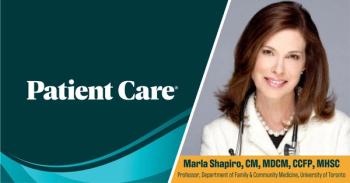
Remote Program Improves Blood Pressure and Cholesterol in High-risk Patients

AHA 2021: Study suggests remote hypertension and hyperlipidemia management programs may expand telehealth delivery, increase access to care, and reduce health inequities.
A remote hypertension (HTN) and hyperlipidemia management program improved blood pressure (BP) and cholesterol levels in high-risk patients while reducing the need for in-person visits, according to new research presented at the American Heart Association
Cholesterol and BP control are persistent clinical challenges,
To address gaps in understanding about remote care delivery, a team of investigators from Brigham and Women’s Hospital and Mass General Brigham Health System developed remote HTN and lipids education and management programs and enrolled over 10 000 patients at high cardiovascular risk through electronic health record screenings and provider referrals.
Nonphysician patient navigators acted as the main point-of-contact with participants, engaging via phone, text message, or email to provide education and gather data. In addition, pharmacists independently prescribed and titrated antihypertensive and lipid-lowering therapy, according to the study abstract. Daily BP measurements and laboratory reports were monitored in real-time for efficacy and safety.
Between January 2018 and October 2021, 3658 patients were enrolled in the HTN program (of whom 74% were referred), 8103 patients in the lipids program, and 958 patients in both programs. Among all participants, the median age was 65 years and 55% were women, 29% non-White, 11% Hispanic, and 10% non-English-speaking.
Researchers received more than 424 000 BP readings and 139 000 lab reports (lipid and metabolic panels) for patients across the programs, according to the abstract.
In the HTN program, the qualifying BP average was 151/84 mmHg. For the 92% of patients who completed the HTN program and reached their BP goals, the average baseline and final BP measurements were 137/79 mmHg and 125/72 mmHg, respectively.
In the lipids program, patients who completed the program had LDL-C reduction of 70 mg/dL, a 50% decrease, and 94% of participants achieved their LDL-C goal.
Researchers observed similar rates of enrollment and reductions in BP and lipids across different racial, ethnic, and primary-language groups.
“Our results in over 10,000 patients demonstrate that standardized, remote, algorithmic care can effectively optimize guideline-directed therapy at scale, reduce cardiovascular risk, and minimize the need for in-person visits,” concluded investigators led by Alexander Blood, MD, cardiologist, critical care and research fellow, Brigham and Women’s Hospital, Boston, Massachusetts. “These results highlight that traditionally underserved and undertreated populations can be managed effectively with digitally enabled remote care programs.”
Reference: Blood A, Cannon CP, Scirica BM, Mass General Brigham Remote Health Team.
Newsletter
Enhance your clinical practice with the Patient Care newsletter, offering the latest evidence-based guidelines, diagnostic insights, and treatment strategies for primary care physicians.

































































































































































































































































































